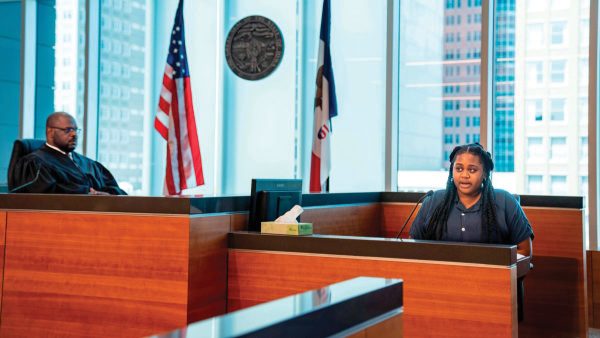Truth or Trump: Race relations in political debate
Oct 6, 2016
With a political atmosphere charged with negativity and flat-out falsehoods, it is hard to find anyone with a leg to stand on.
In one corner, an ego inflated with hot air arguably sporting the most talked about hair of the decade, who can’t keep a business afloat and yet wants to run a country.
In the other, a politician who has not only made her fair share of mistakes in office, but has a somewhat spotted history as a lawyer representing – and keeping free – dangerous individuals.
In order to move past spotty histories such as these, the candidates must take a firm and informed stance on key, hot-button voter-drawing issues. Maybe not as firm or informed as the voting public would like.
In our Oct. 3 issue, our opinion columnists wrote on the first presidential debate between Donald Trump and Hillary Clinton.
No one really expected that Trump would be the best informed – especially, it seems, of his own previous statements. And though Hillary came prepared and informed, some of her statements were not as firm as could be desired.
Abbi Cobb, a fellow columnist here at the Northern Iowan, called Clinton out on her somewhat inadequate statement in reference to racial police brutality.
Clinton said that “implicit bias is a problem for everyone, not just police,” saying police are biased while deflecting the question by including them in a catchall “everyone” category so as not to alienate more conservative voters.
Kyle Day, another columnist, called the Democratic party out as a whole for their “maintained majority . . . control over our largest, most influential cities,” stating that such control places the oversight of “the plight(s) of racial minorities, particularly blacks,” in the hands of the left, apparently absolving conservatives of any liability.
While Day’s comments highlight the problems addressed in Clinton’s deflection mentioned above – that the entire institution is at fault – his claim that the Democratic party has held our “most influential” cities for “a half-century” while leaving minorities to fend for themselves is about as true as much of Trump’s own claims.
For more on the truth of Trumps statements, Politifact.com provides a real-time fact-check of presidential debates, and readers can still review an accurate representation of Trump’s campaign thus far as reflected by the September 26 debate.
First off, New York City – the largest in US by population – has elected a republican for three-fifths of their mayors in the last 50 years. This includes Mayor Rudy Giuliani, who is known for his support of the infamous New York Stop-and-Frisk policy.
According to the New York Civil Liberties Union, Stop-and-Frisk was utilized 22,939 times with 80 percent of those stopped being innocent and 83 percent being either black or Latino.
Los Angeles, our next largest city by population, has admittedly only seen one Republican as mayor in the last 50 years, and even that lasted only seven years. And those seven years weren’t half bad.
As with many locations in America in the early 90s, LA saw the start of a drop in violent and property crime, stemmed only recently with the first two years of increased violent crime and the first year of increase in property crime in 2015, according to an article in the Los Angeles Times.
There is the question of crimes outside of property and violence – namely corruption. Mayor Richard Riordan, a Republican, of LA closed his mayoral career of the heels of the notorious Rampart police corruption scandal in which his own administration stood in murky waters, according to a March 2000 article in the LA Times.
This brings us to Chicago, the third largest city by population in the US. It hasn’t seen a non-Democrat mayor since 1931, with 32 of the last 50 years seeing the Daley Dynasty in office. Richard M. Daley, the most recent of the Daleys, also benefitted from the nationwide decrease in crime in the 90s that Mayor Riordan had in LA.
While Riordan’s part was played in increasing LAPD ranks, the decrease in Chicago crime is largely credited with Daley’s focus on gun control.
Also in contrast, Riordan’s work with the LAPD ended in a corruption scandal, whereas Daley’s gun control programs were met with a legal suit by gun rights activists – which the activists won in the US Supreme Court.
It was also Daley, however, who continued to build stronger race relations after his predecessor Mayor Harold Washington, according to a New York Times article from September 2010.
In this article, Maria de los Angeles Torres – director of Latin American and Latinos studies at University of Illinois Chicago, and former member of Mayor Washington’s cabinet – goes on to applaud Daley’s work in supporting minority groups in Chicago.
In New York, a Republican mayor approved the assault of 18,353 innocent people by police officers.
In LA, a Republican mayor fought crime by putting armed, corrupt police officers on the streets.
In Chicago, a Democratic Mayor got guns off the streets and continued his predecessor’s support of minority communities.
I suppose Day’s claims were right. Democrats just might be responsible for some of the changes in race relations today.
















